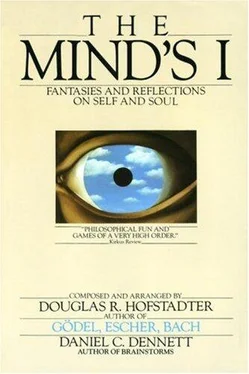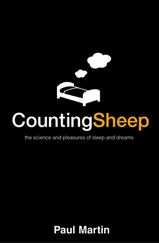In recent years—the last six hundred million or so—the replicators have achieved notable triumphs of survival-machine technology such as the muscle, the heart, and the eye (evolved several times independently). Before that, they radically altered fundamental features of their way of life as replicators, which must be understood if we are to proceed with the argument.
The first thing to grasp about a modern replicator is that it is highly gregarious. A survival machine is a vehicle containing not just one gene but many thousands. The manufacture of a body is a cooperative venture of such intricacy that it is almost impossible to disentangle the contribution of one gene from that of another. A given gene will have many different effects on quite different parts of the body. A given part of the body will be influenced by many genes, and the effect of any one gene depends on interaction with many others. Some genes act as master genes controlling the operation of a cluster of other genes. In terms of the analogy, any given page of the plans makes reference to many different parts of the building; and each page makes sense only in terms of cross-references to numerous other pages.
This intricate interdependence of genes may make you wonder why we use the word “gene” at all. Why not use a collective noun like “gene complex”? The answer is that for many purposes that is indeed quite a good idea. But if we look at things in another way, it does make sense too to think of the gene complex as being divided up into discrete replicators or genes. This arises because of the phenomenon of sex. Sexual reproduction has the effect of mixing and shuffling genes. This means that any one individual body is just a temporary vehicle for a short-lived combination of genes. The combination of genes that is any one individual may be short-lived, but the genes themselves are potentially very long-lived. Their paths constantly cross and recross down the generations. One gene may be regarded as a unit which survives through a large number of successive individual bodies.
* * *
Natural selection in its most general form means the differential survival of entities. Some entities live and others die but, in order for this selective death to have any impact on the world, an additional condition must be met. Each entity must exist in the form of lots of copies, and at least some of the entities must be potentially capable of surviving—in the form of popies—for a significant period of evolutionary time. Small genetic units have these properties; individuals, groups, and species do not. It was the great achievement of Gregor Mendel to show that hereditary units can be treated in practice as indivisible and independent particles. Nowadays we know that this is a little too simple. Even a cistron is occasionally divisible and any two genes on the same chromosome are not wholly independent. What I have done is to define a gene as a unit which, to a high degree, approaches the ideal of indivisible particulateness. A gene is not indivisible, but it is seldom divided. It is either definitely present or definitely absent in the body of any given individual. A gene travels intact from grandparent to grandchild, passing straight through the intermediate generation without being merged with other genes. If genes continually blended with each other, natural selection as we now understand it would be impossible. Incidentally, this was proved in Darwin’s lifetime, and it caused Darwin great worry since in those days it was assumed that heredity was a blending process. Mendel’s discovery had already been published, and it could have rescued Darwin, but alas he never knew about it: nobody seems to have read it until years after Darwin and Mendel had both died. Mendel perhaps did not realize the significance of his findings, otherwise he might have written to Darwin.
Another aspect of the particulateness of the gene is that it does not grow senile; it is no more likely to die when it is a million years old than when it is only a hundred. It leaps from body to body down the generations, manipulating body after body in its own way and for its own ends, abandoning a succession of mortal bodies before they sink in senility and death.
The genes are the immortals, or rather, they are defined as genetic entities which come close to deserving the title. We, the individual survival machines in the world, can expect to live a few more decades. But the genes in the world have an expectation of life which must be measured not in decades but in thousands and millions of years.
* * *
Survival machines began as passive receptacles for the genes, providing little more than walls to protect them from the chemical warfare of their rivals and the ravages of accidental molecular bombardment. In the early days they “fed” on organic molecules freely available in the soup. This easy life came to an end when the organic food in the soup, which had been slowly built up under the energetic influence of centuries of sunlight, was all used up. A major branch of survival machines, now called plants, started to use sunlight directly themselves to build up complex molecules from simple ones, reenacting at much higher speed the synthetic processes of the original soup. Another branch, now known as animals, “discovered” how to exploit the chemical labors of the plants, either by eating them, or by eating other animals. Both main branches of survival machines evolved more and more ingenious tricks to increase their efficiency in their various ways of life, and new ways of life were continually being opened up. Subbranches and sub-subbranches evolved, each one excelling in a particular specialized way of making a living: in the sea, on the ground, in the air, underground, up trees, inside other living bodies. This subbranching has given rise to the immense diversity of animals and plants which so impresses us today.
Both animals and plants evolved into many-celled bodies, complete copies of all the genes being distributed to every cell. We do not know when, why, or how many times independently, this happened. Some people use the metaphor of a colony, describing a body as a colony of cells. I prefer to think of the body as a colony of genes, and of the cell as a convenient working unit for the chemical industries of the genes.
Colonies of genes they may be but, in their behavior, bodies have undeniably acquired an individuality of their own. An animal moves as a coordinated whole, as a unit. Subjectively I feel like a unit, not a colony. This is to be expected. Selection has favored genes which cooperate with others. In the fierce competition for scarce resources, in the relentless struggle to eat other survival machines, and to avoid being eaten, there must have been a premium on central coordination rather than anarchy within the communal body. Nowadays the intricate mutual coevolution of genes has proceeded to such an extent that the communal nature of an individual survival machine is virtually unrecognizable. Indeed many biologists do not recognize it, and will disagree with me.
* * *
One of the most striking properties of survival-machine behavior is its apparent purposiveness. By this I do not just mean that it seems to be well calculated to help the animal’s genes to survive, although of course it is. I am talking about a closer analogy to human purposeful behavior. When we watch an animal “searching” for food, or for a mate, or for a lost child, we can hardly help imputing to it some of the subjective feelings we ourselves experience when we search. These may include “desire” for some object, a “mental picture” of the desired object, an “aim” or “end in view.” Each one of us knows, from the evidence of his own introspection, that, at least in one modern survival machine, this purposiveness has evolved the property we call “consciousness.” I am not philosopher enough to discuss what this means, but fortunately it does not matter for our present purposes because it is easy to talk about machines which behave as if motivated by a purpose, and to leave open the question whether they actually are conscious. These machines are basically very simple, and the principles of unconscious purposive behavior are among the commonplaces of engineering science. The classic example is the Watt steam governor.
Читать дальше











